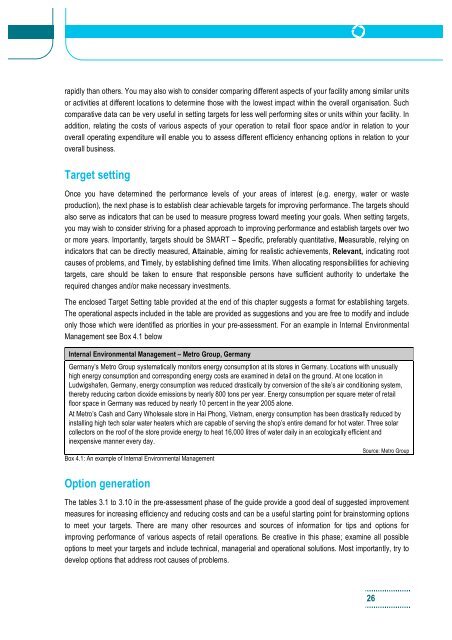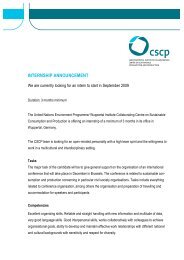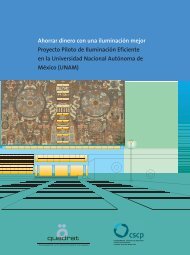Retailers Calendar
Retailers Calendar
Retailers Calendar
You also want an ePaper? Increase the reach of your titles
YUMPU automatically turns print PDFs into web optimized ePapers that Google loves.
apidly than others. You may also wish to consider comparing different aspects of your facility among similar units<br />
or activities at different locations to determine those with the lowest impact within the overall organisation. Such<br />
comparative data can be very useful in setting targets for less well performing sites or units within your facility. In<br />
addition, relating the costs of various aspects of your operation to retail floor space and/or in relation to your<br />
overall operating expenditure will enable you to assess different efficiency enhancing options in relation to your<br />
overall business.<br />
Target setting<br />
Once you have determined the performance levels of your areas of interest (e.g. energy, water or waste<br />
production), the next phase is to establish clear achievable targets for improving performance. The targets should<br />
also serve as indicators that can be used to measure progress toward meeting your goals. When setting targets,<br />
you may wish to consider striving for a phased approach to improving performance and establish targets over two<br />
or more years. Importantly, targets should be SMART – Specific, preferably quantitative, Measurable, relying on<br />
indicators that can be directly measured, Attainable, aiming for realistic achievements, Relevant, indicating root<br />
causes of problems, and Timely, by establishing defined time limits. When allocating responsibilities for achieving<br />
targets, care should be taken to ensure that responsible persons have sufficient authority to undertake the<br />
required changes and/or make necessary investments.<br />
The enclosed Target Setting table provided at the end of this chapter suggests a format for establishing targets.<br />
The operational aspects included in the table are provided as suggestions and you are free to modify and include<br />
only those which were identified as priorities in your pre-assessment. For an example in Internal Environmental<br />
Management see Box 4.1 below<br />
Internal Environmental Management – Metro Group, Germany<br />
Germany’s Metro Group systematically monitors energy consumption at its stores in Germany. Locations with unusually<br />
high energy consumption and corresponding energy costs are examined in detail on the ground. At one location in<br />
Ludwigshafen, Germany, energy consumption was reduced drastically by conversion of the site’s air conditioning system,<br />
thereby reducing carbon dioxide emissions by nearly 800 tons per year. Energy consumption per square meter of retail<br />
floor space in Germany was reduced by nearly 10 percent in the year 2005 alone.<br />
At Metro’s Cash and Carry Wholesale store in Hai Phong, Vietnam, energy consumption has been drastically reduced by<br />
installing high tech solar water heaters which are capable of serving the shop’s entire demand for hot water. Three solar<br />
collectors on the roof of the store provide energy to heat 16,000 litres of water daily in an ecologically efficient and<br />
inexpensive manner every day.<br />
Box 4.1: An example of Internal Environmental Management<br />
Source: Metro Group<br />
Option generation<br />
The tables 3.1 to 3.10 in the pre-assessment phase of the guide provide a good deal of suggested improvement<br />
measures for increasing efficiency and reducing costs and can be a useful starting point for brainstorming options<br />
to meet your targets. There are many other resources and sources of information for tips and options for<br />
improving performance of various aspects of retail operations. Be creative in this phase; examine all possible<br />
options to meet your targets and include technical, managerial and operational solutions. Most importantly, try to<br />
develop options that address root causes of problems.<br />
26
















